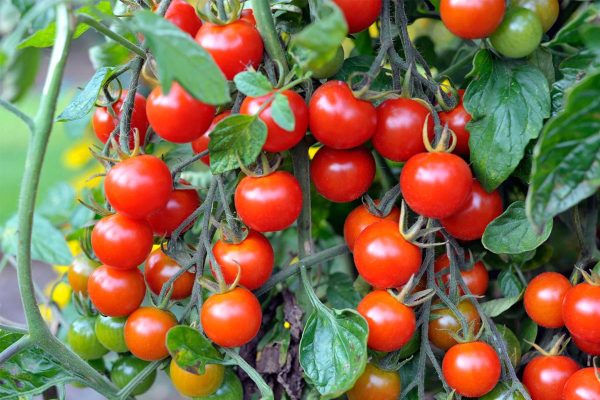
The Science Behind Planting Tomatoes with Coffee Grounds for Rapid Growth
In the world of gardening, tomatoes stand out as one of the most beloved and versatile crops. Whether sliced fresh in salads, cooked into sauces, or sun-dried for a burst of flavor, tomatoes grace our plates in countless delicious forms. However, to ensure a plentiful harvest of juicy, ripe tomatoes, gardeners often seek ways to enhance plant growth and productivity. One increasingly popular method involves harnessing the power of coffee grounds. Yes, you read that right – coffee grounds! In this comprehensive guide, we’ll explore the fascinating science behind why you need to plant tomatoes with coffee grounds for fast growth.
The Nutrient-Rich Brew:
At first glance, coffee grounds may seem like nothing more than discarded remnants of your morning brew. However, these humble grounds contain a treasure trove of nutrients that can work wonders for your tomato plants. Nitrogen, phosphorus, potassium, and trace minerals are just some of the essential elements found in coffee grounds. Among these, nitrogen takes center stage as a key component in promoting vigorous plant growth. It’s no surprise that nitrogen-rich fertilizers are a staple in gardening – they fuel the lush foliage and robust stem development vital for supporting the weight of tomato plants as they mature.

Also Read This : Unveiling the Best Liquid Fertilizer for Thriving Indoor Plants
Soil Structure and Aeration:
Healthy soil is the foundation of successful gardening, and coffee grounds play a crucial role in enhancing soil structure. When incorporated into the earth, coffee grounds improve soil texture, promoting better aeration and drainage. This aerated soil allows tomato roots to penetrate more deeply, accessing water, oxygen, and nutrients more effectively. Additionally, the organic matter in coffee grounds acts as a sponge, retaining moisture and preventing soil compaction – both critical factors for robust plant growth.
Balancing pH Levels:
Maintaining the proper pH balance in your soil is essential for optimal plant health. Tomatoes prefer slightly acidic soil, with a pH range of 6.0 to 6.8. Coffee grounds, though acidic in their fresh form, undergo a transformation during the composting process. As coffee grounds decompose, their acidity diminishes, making them suitable for use in a variety of garden settings. Incorporating coffee grounds into your soil helps regulate pH levels, creating an environment conducive to healthy tomato growth.
Also Read This : Troubleshooting Yellowing Hibiscus Buds: Essential Tips for a Blossoming Garden
Pest Management:
In the battle against garden pests, coffee grounds emerge as a natural ally. Certain pests, such as slugs, snails, and even cats, are repelled by the abrasive texture and strong scent of coffee grounds. By spreading a layer of coffee grounds around your tomato plants, you can deter these unwanted visitors without resorting to harmful chemicals. Additionally, coffee grounds contain compounds that may suppress the growth of fungal pathogens, further protecting your tomatoes from disease.
Sustainability in Action:
Beyond their benefits for plant growth, using coffee grounds in your garden is a sustainable practice with environmental implications. By repurposing coffee grounds as a soil amendment, you divert organic waste from landfills, reducing methane emissions and conserving valuable landfill space. This eco-friendly approach aligns with the principles of sustainable gardening, promoting resource conservation and environmental stewardship.

Also Read This : Unlocking the Secret to Keeping Your Curry Leaf Plant Green Year-Round: One Simple Addition
How to Incorporate Coffee Grounds into Your Tomato Planting Routine:
Now that we’ve explored the science behind planting tomatoes with coffee grounds, let’s discuss how to put this knowledge into action. Follow these steps to incorporate coffee grounds into your gardening routine and unlock the full potential of your tomato plants:
Collecting Coffee Grounds:
Start by collecting used coffee grounds from your daily brews. Many coffee shops and cafes offer free or discounted grounds for gardening purposes, so don’t hesitate to inquire about their policies.
Also Read This : Exploring the Medicinal Marvels of the Sehund Plant
Composting or Direct Application:
You have two primary options for using coffee grounds in your garden: composting or direct application. If you compost your coffee grounds, mix them with other organic materials to create nutrient-rich compost for your tomato plants. Alternatively, you can apply coffee grounds directly to the soil around your tomato plants, either as a mulch or worked into the earth.
Mixing Ratio:
When incorporating coffee grounds into your soil, aim for a ratio of approximately 10-20% coffee grounds to soil. This ratio provides a balanced blend of nutrients without overwhelming the soil with excess nitrogen.
Also Read This : A Guide on How to Care for Your Tomato Plant Post-Planting
Watering and Maintenance:
After applying coffee grounds to your garden bed, water the soil thoroughly to help distribute the nutrients and activate their beneficial properties. Throughout the growing season, continue to monitor your tomato plants and supplement with additional coffee grounds as needed to maintain soil fertility.

Also Read This : Tomato Transplanting Tips: A Guide to Timing and Techniques for Successful Gardening in Both Beds and Containers
In conclusion, planting tomatoes with coffee grounds is a scientifically-backed method for promoting fast growth and abundant harvests. From their nutrient-rich composition to their soil-enhancing properties and natural pest-repellent abilities, coffee grounds offer a holistic solution for maximizing the productivity of your tomato plants. By incorporating coffee grounds into your gardening routine, you not only reap the rewards of healthy, thriving tomatoes but also contribute to sustainable practices that benefit the environment. So, the next time you enjoy your morning cup of coffee, remember to save those grounds – your tomatoes will thank you for it!
Also Read This : How to Achieve Bumper Tomato Yields: Choosing the Right Fertilizer




